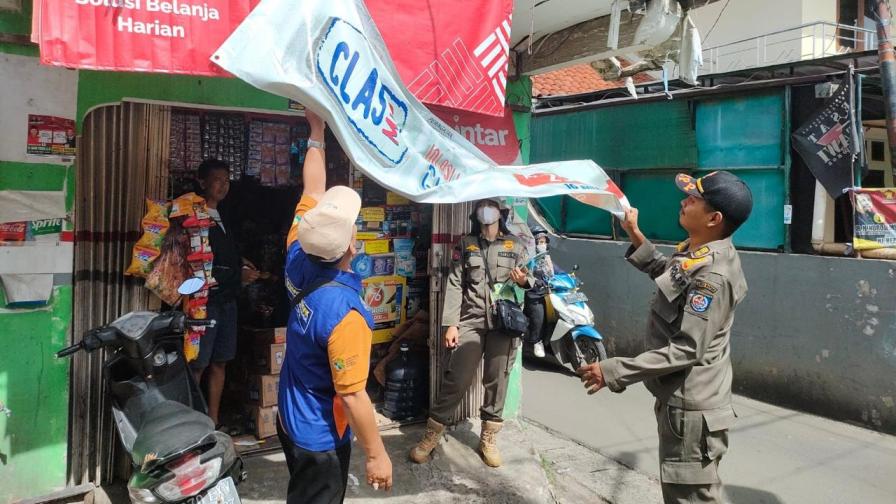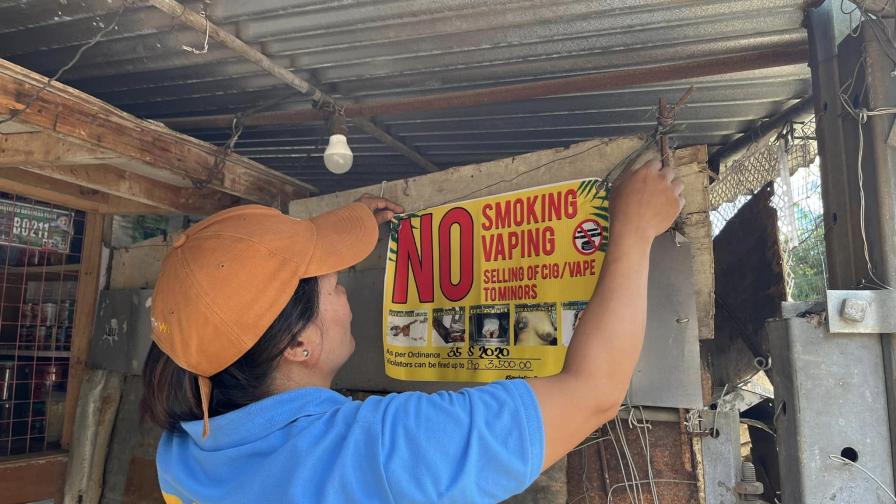
Enforcement includes monitoring of compliance, identifying violations and taking corrective action. It should be risk-based, utilizing data and evidence to guide where resources are allocated. Sanctions are a tool to deter non-compliance and hold violators accountable and should be used appropriately in line with regulations.
However, inspections cannot take place everywhere at all times. To be effective, enforcement should be part of a system that promotes and builds compliance.
TOP TIP: Regular monitoring and inspections not only identify non-compliance, they also signal action to the public and provide opportunities for education and awareness-raising.
- Develop and adopt clear inspection protocols and monitoring checklists.
- Ensure protocols align with specific requirements under the tobacco control law and other relevant legislation. This supports the legality of inspections and the validity of any evidence gathered in case it is required for sanctioning.
- Where surveillance can be embedded into existing inspection mechanisms, for example monitoring smoke-free compliance in restaurants by food safety officers, it may be necessary to amend their existing protocols or checklists to incorporate tobacco control indicators.

- Conduct proactive monitoring of random and targeted businesses alongside reactive inspections in response to complaints or emerging issues.
- Proactive monitoring can include both regular, scheduled inspections and random, unannounced visits. Where multiple agencies are empowered under the law, multi-sectoral inspections should be conducted, in addition to monitoring by individual agencies. Enforcement of some laws may require covert or undercover inspections, such as youth sales.
- Reactive inspections for complaints should be investigated and handled as quickly as possible.
- Data from compliance surveys, surveillance systems, inspections and complaints can be used to identify high risk sectors for more targeted inspections, directing resources where they are needed most.
- Embed monitoring into existing enforcement activities wherever possible, to maximize the use of public resources and reduce the burden on those being inspected. For example, education officers visiting schools can check compliance with smoke-free and tobacco sales laws.
- Where appropriate, utilize surveillance technology to conduct monitoring. For example, web-scraping tools can identify illegal online sales of tobacco. Learn more about how technology is being used to monitor tobacco control laws here.
- Utilize monitoring to promote compliance by providing advice and guidance to stakeholders during inspections.
- To learn more about types of inspections and recommendations for monitoring different tobacco control laws, please click here.
TOP TIP: The frequency of inspections should be proportional to the level of risk. For long-standing laws this will depend, in part, on existing levels of compliance, i.e., whether significant improvement is needed versus maintenance of high compliance.
- When non-compliance is identified, take corrective enforcement action to achieve compliance and deter future violations. Enforcement actions may include written warnings, legal rectification notices, fines, criminal prosecution, product seizures and revocation of operating licenses. Learn more about the recommended penalties for different laws here.
- Ensure enforcement action is appropriate, consistent and in accordance with the regulations. A risk-based and proportional approach should be taken to applying them. Learn more about risk-based enforcement here.
- Where rectification notices are given, ensure follow-up checks are made.
- Supply officers with the necessary equipment and forms to record inspections and gather evidence of violations as required for sanctioning, according to relevant legal procedures.
- Publishing enforcement actions publicly can promote compliance by raising the awareness of other entities and the public. The action of ‘naming and faming’ can be a reward for businesses to comply. Conversely, the action of ‘naming and shaming’ can also be a penalty for businesses and act as a deterrent.
- Where the tobacco control law does not include sanctions, or they are not significant enough to act as a deterrent, it may be possible to take action under other relevant laws, such as food safety, fire safety or child protection laws. Learn more here.
TOP TIP: Increasing the visibility of enforcement can help build compliance when the regulations limit or restrict sanctioning. Frequent and visible inspections not only identify non-compliance, they also signal action to the public and provide opportunities for education and awareness-raising. Combining inspections with a dedicated communications campaign, and engaging the media in enforcement, can also increase their impact.
- Following inspections, officers should generate reports and share them with relevant stakeholders. This helps to ensure that the proper follow-up actions have taken place, that records are in order, and that inspections can be audited to check they were conducted correctly. This should apply to all monitoring visits, whether or not they detected violations.
- Sharing inspection data publicly can demonstrate transparency and promote accountability.
- Indicators of monitoring, enforcement and compliance should be tracked and used to identify high priority entities or areas for improvement and to monitor progress. To learn more about the importance of reporting as it relates to evaluation, click here.

India’s National Tobacco Control Program (NTCP), empowered to implement the country’s national tobacco control law, the Cigarettes and Other Tobacco Products Act (COTPA), created and maintains a national dashboard providing an overview of key tobacco control statistics. The data repository, known as the MIS Dashboard, tracks the number of State and District Level Coordination Committees notified for tobacco control. It also tracks important implementation and enforcement interventions, including the number of violations recorded under different sections of COTPA and training and communications efforts at the state and local level. The database is maintained at the national level and, under NTCP, states are mandated to report relevant data regularly. The data is used by NTCP to identify key priorities and gaps in implementation. Visit the MIS Dashboard to learn more.
- Complicated sanctioning mechanisms – some jurisdictions have complex procedures for issuing sanctions, including limiting the scope of inspectors’ roles, requiring multiple inspections over a long period of time to issue a penalty, or only allowing fines to be issued through courts. This can dissuade enforcement officials from issuing sanctions. These mechanisms should be considered when establishing implementing guidelines or regulations; sometimes it may be necessary to empower new officials to issue sanctions. Sensitizing the judiciary and leaders on the need for sanctions can help ensure appropriate penalties are being issued.
- Insufficient sanctions – some laws establish sanctions that are not sufficiently punitive to encourage compliance and deter violations. If the sanction is not high enough, penalties may be seen as a regular cost associated with running their business. Strong sanctions should be established in the implementing regulations or guidelines.
- Limited personnel - if the number of authorized inspectors is limited, or resource allocation is low, routine monitoring and education can be conducted by other stakeholders, for example civil society groups or officers with relevant responsibilities under an alternative law. However, strong coordination is needed with authorized tobacco control law inspectors to ensure any identified violations are handled effectively and efficiently.
